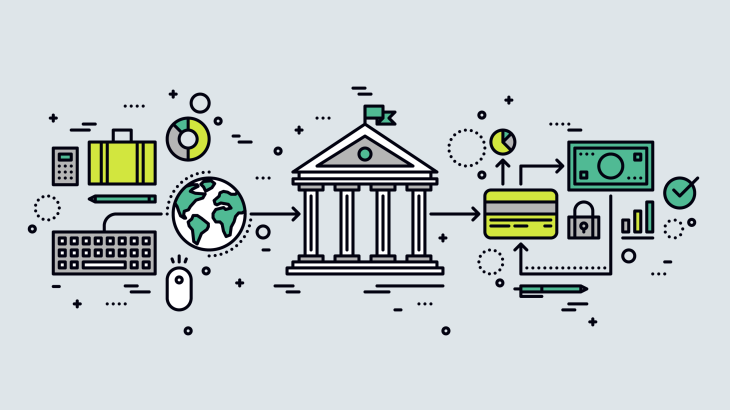A smart city is a digitally transformed city were cutting edge emerging technologies like the internet of things, artificial intelligence (AI), robotics, cloud computing, crowdfunding disrupting traditional banking models by enhancing the quality of urban services and inversely reducing the consumption and wastage of resources.
A new type of banking customer persona raised in the last few years, a client that is tech-savvy, who is permanently connected to the internet, who craves immediacy and fewer complexities, who wants personalized banking services, and who also wants to drive significant banking policy changes. Banks adapted and embraced digital transformation by introducing unique new service offerings.
Cashless
The world’s ambitious smart nation, Singapore, has plans to go entirely cashless. One of the first steps towards this objective was the gathering of 9 banks offer a Paynow service, a peer-to-peer electronic money transfer between retail customers. It allows for instant transfer between parties without any need for the receiver’s account number or bank. It utilizes consumers’ phone numbers or Singapore NRIC/FIN. Corporate Paynow enables Entities to pay and receive Singapore Dollar funds instantly by linking their Singaporean Unique Entity Number (UEN) to their Singapore bank account. They do not need to know the bank and account number of other corporate bodies when making transfers.
Real Estate
The Commonwealth Bank of Australia (CBA) innovated around a core banking product- mortgage, by partnering with domains.au to create an app that searches the domain.au database for the details of all listed properties. This simplifies the mortgage application procedure enabling prospective homeowners to be more engaged and involved in the process. After choosing their preferred apartment online, customers can click through to get professional advice or be referred to an adviser in a close-by offline branch. After completing their application process online, customers are kept abreast of all the bank’s decision on the application with electronic alerts. Customers can also manage and view payment status on their app using the internet, mobile or ATM. This simple yet innovative solution has sealed’s CBA’s position as the top mortgage bank in Australia.
Robots
HSBC’s New York flagship branch caused a stir when it deployed Pepper, a humanoid bot for customer service duties. Pepper proactively asks customers entering the bank if they have any special requests, which it responds to. Pepper reduces customer waiting time by notifying staff of requests from clients. It also provides tutorials by educating and encouraging clients to use the full range of banking tools offered by HSBC. Pepper has also been instrumental in helping the bank go viral by being used for promotions where clients pose for photos with the robot. Pepper is a foretaste of the future of smart banking. Following the initial success of Pepper, HSBC has commenced a nationwide roll-out of pepper.
Renewable Energy
JP Morgan Chase has committed to solely running on renewable energy. They recently pledged to go 100% green by 2020 and to commit $200 billion to fund clean energy by 2025. They aim to achieve this by decreasing energy consumption by 15% using smart systems and reducing lighting-related consumption by 50% using smart LEDs.
E-Invoicing
Automation and standardization will ensure invoice processing a self-driven process. It involves the use of universal business languages for standardizing purchase orders, invoices, and transport logistics. This saves a great deal of time and effort in recreating invoice data.
Branchless & Client-Centric
Intessa Sanpaolo bank, launched new Superflash branches, targeting young customers aged 18 – 35 years. The offices cater to the younger generation and were conceived as a meeting place for guidance, consultancy, training on personal finance, and as a unique venue for hip events like sports, fashion shows, concerts, and other cultural events. The Superflash emulates innovation hubs with its free WI-FI connection, live video conferencing infrastructure, and secure computer connectivity. It spots desks, cashier counters, a spacious self-service area for consultation and cubicles for discussions and multimedia meetings. The spatial flexibility of the Superflash branches allows for the easy reorganization of the branch to host exciting events.
Crowdfunding
Promoting crowdfunding is another alternative to funding city projects which banks more than willing to offer their services as another variation of a loan. It offers the opportunity for collectives with a common interest to invest in their desired project.
Machine Economy
Interconnection of things especially through the network/internet connections, vehicles and households will consume a new type of banking services.



